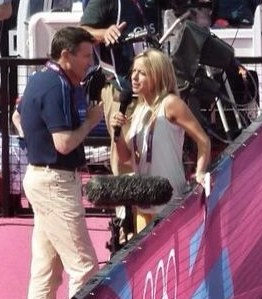 As many Sciencebase readers will know Telstar was a generic name given to a range of communications satellites (the idea for which was first posited by author Arthur C Clarke). The first two Telstar satellites were experimental. Telstar 1 was launched atop a Thor-Delta rocket on 10th July 10 1962 and successfully relayed the first television pictures, telephone calls, and fax images through space. Telstar 2 was launched May 7, 1963. Telstar 1 and 2, though no longer functional, are still in orbit as of August 2012.
As many Sciencebase readers will know Telstar was a generic name given to a range of communications satellites (the idea for which was first posited by author Arthur C Clarke). The first two Telstar satellites were experimental. Telstar 1 was launched atop a Thor-Delta rocket on 10th July 10 1962 and successfully relayed the first television pictures, telephone calls, and fax images through space. Telstar 2 was launched May 7, 1963. Telstar 1 and 2, though no longer functional, are still in orbit as of August 2012.
Having just got back from a day at The London 2012 Olympic Games (we saw two men’s hockey matches, preliminary rounds, photos here, prog rock band Muse were in my mind when LilyThePurr mentioned the record label Telstar. Muse, of course, wrote and performed the London 2012 anthem. Intriguingly though, frontman Matt Bellamy‘s father was none other than Sunderland-born George Bellamy, rhythm guitarist with The Tornados (Billy Fury’s backing band). who had a hit with a space-age novelty track called…you guessed it, Telstar. The song recorded by infamous and ingenious record producer Joe Meek in his upstairs flat recording studio in the Holloway Road, London, featured an early electronic keyboard known as a clavioline. The upbeat and electronic sounds evoked the positive space-age and pro-science spirit of the 1950s and early 1960s.
The instrument was invented by Constant Martin in 1947 and comprised a keyboard and separate amplifier and speaker unit. It covered three octaves and tone controls to add vibrato and other effects. The instrument used by Meek was the Univox Clavioline, a successor to earlier models used on recordings since the early 1950s. Meek’s somewhat tragic story is told in the 2008 biopic Telstar. The sound of the much later Stylophone was rather reminiscent of the Clavioline and their limited but weird sounds have featured prominently in various recordings that grasp the retro cache tightly.
Meanwhile, I was hoping to unearth a comment from Lord Coe that connected him to Matt Bellamy, Bob Dylan and the whole Telstar legacy. Maybe I could ask my friend Clare, who is Matt B’s cousin instead…
Watch where you put that microphone, Seb, interviewed by Abi Griffiths.
 As many Sciencebase readers will know Telstar was a generic name given to a range of communications satellites (the idea for which was first posited by author Arthur C Clarke). The first two Telstar satellites were experimental. Telstar 1 was launched atop a Thor-Delta rocket on 10th July 10 1962 and successfully relayed the first television pictures, telephone calls, and fax images through space. Telstar 2 was launched May 7, 1963. Telstar 1 and 2, though no longer functional, are still in orbit as of August 2012.
As many Sciencebase readers will know Telstar was a generic name given to a range of communications satellites (the idea for which was first posited by author Arthur C Clarke). The first two Telstar satellites were experimental. Telstar 1 was launched atop a Thor-Delta rocket on 10th July 10 1962 and successfully relayed the first television pictures, telephone calls, and fax images through space. Telstar 2 was launched May 7, 1963. Telstar 1 and 2, though no longer functional, are still in orbit as of August 2012.